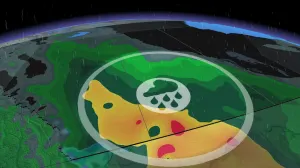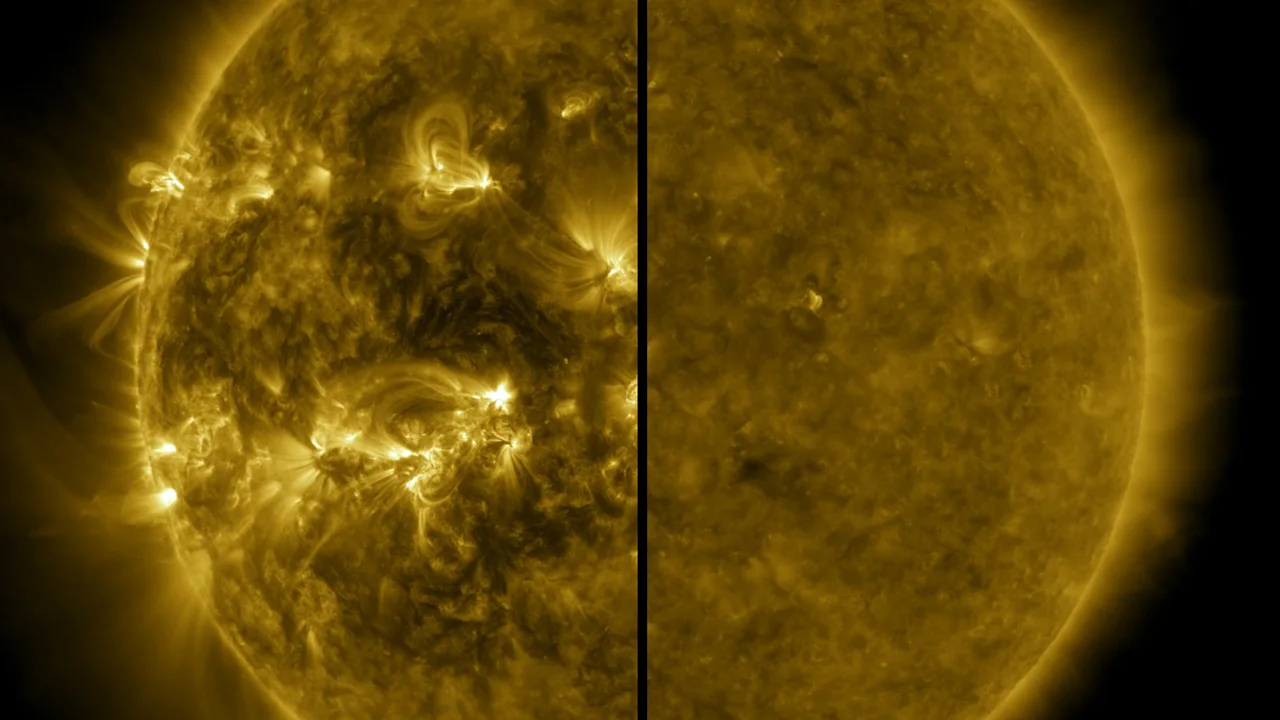
Aurora chasers and space weather enthusiasts rejoice! A new solar cycle is here
This new solar cycle may signal a halt to the slow decline of activity on the Sun
NASA and NOAA have confirmed that, as of December 2019, Solar Cycle 24 has ended, and Solar Cycle 25 has begun. This new solar cycle brings a renewed commitment to monitoring solar activity and the promise of new scientific discoveries.
For some time, scientists and space weather enthusiasts have been anticipating the arrival of solar minimum. This is the point in the Sun's 11-year sunspot cycle that indicates the transition from one solar cycle to the next. After months of careful monitoring, sunspot activity has now shown that we have, indeed, experienced solar minimum, and the new solar cycle has started.
"We have entered Solar Cycle 25," said Dr. Nicky Fox, the Heliophysics Division Director at NASA HQ in Washington, DC. "That's important for us, because it means we are going to see a whole new aspect of our star."
Tracing exactly when this transition happened, though, was not an easy task. It required careful observation of the number of sunspots visible on the Sun's surface, plus a detailed analysis of where these sunspots are showing up, and their specific magnetic polarity.
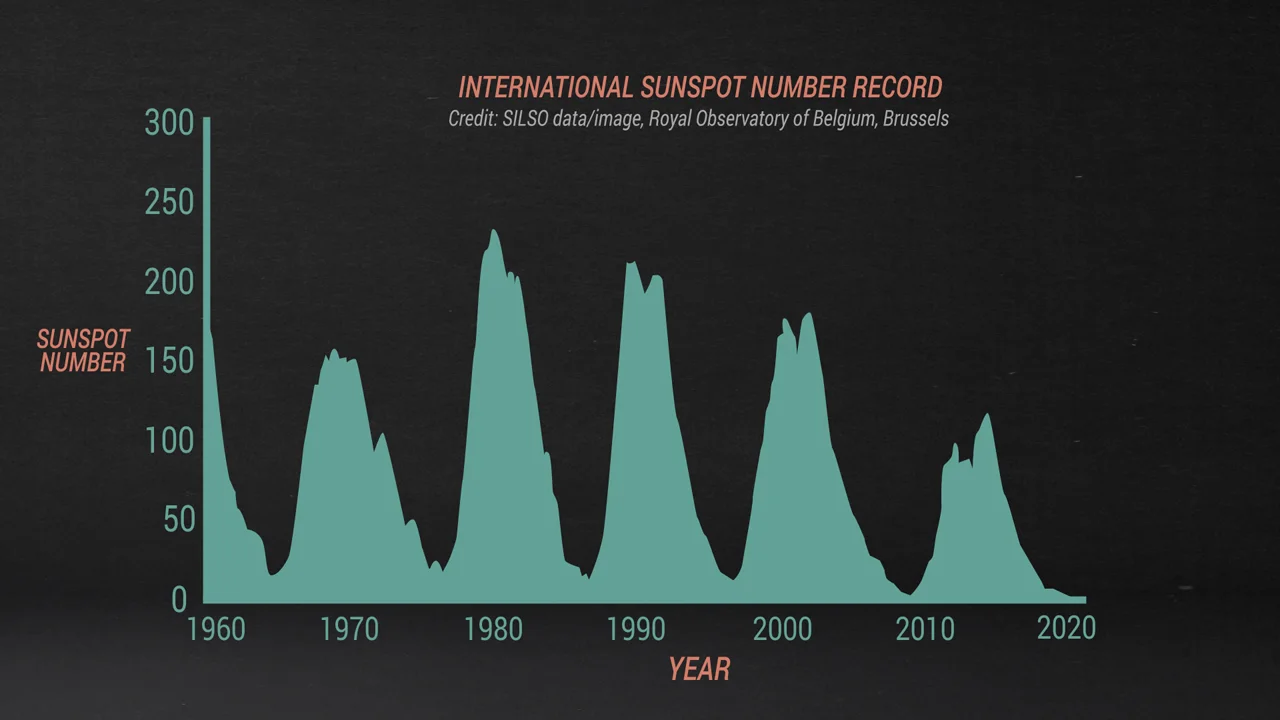
This graph shows the sunspot number over the past five solar cycles, tracing each cycle from minimum to maximum to minimum. Credit: SILSO data/image, Royal Observatory of Belgium, Brussels
Sunspots are regions of intense magnetic activity, concentrated on the Sun's surface. They appear as dark blotches, as this magnetic activity exposes the sunspot area to space, causing it to cool compared to the surrounding material.
However, when viewed in other wavelengths of light, the intense magnetic activity surrounding the sunspot becomes apparent, with tangles and knots of magnetic coronal loops.
Visit our Complete Guide to Fall 2020 for an in-depth look at the Fall Forecast, tips to plan for it and a sneak peek at the winter ahead

An immense sunspot complex, from July 9, 2012, imaged in both visible light and extreme ultraviolet. While the sunspots appear dark and calm in the visible, the entire region is alive with intense magnetic field activity, as seen in the ultraviolet. Credit: NASA SDO
At the beginning of any particular solar cycle, the Sun is mostly clear of these blemishes. As the solar cycle progresses, more sunspots develop, and they become bigger and longer-lived, with the greatest number appearing at solar maximum. The number, size and duration of sunspots then ramp down again towards the next minimum.
Meanwhile, throughout the solar cycle, sunspots show a particular pattern in their location. At the start of the cycle, they appear in the solar mid-latitudes, and as the cycle progresses, they get closer and closer to the equator.
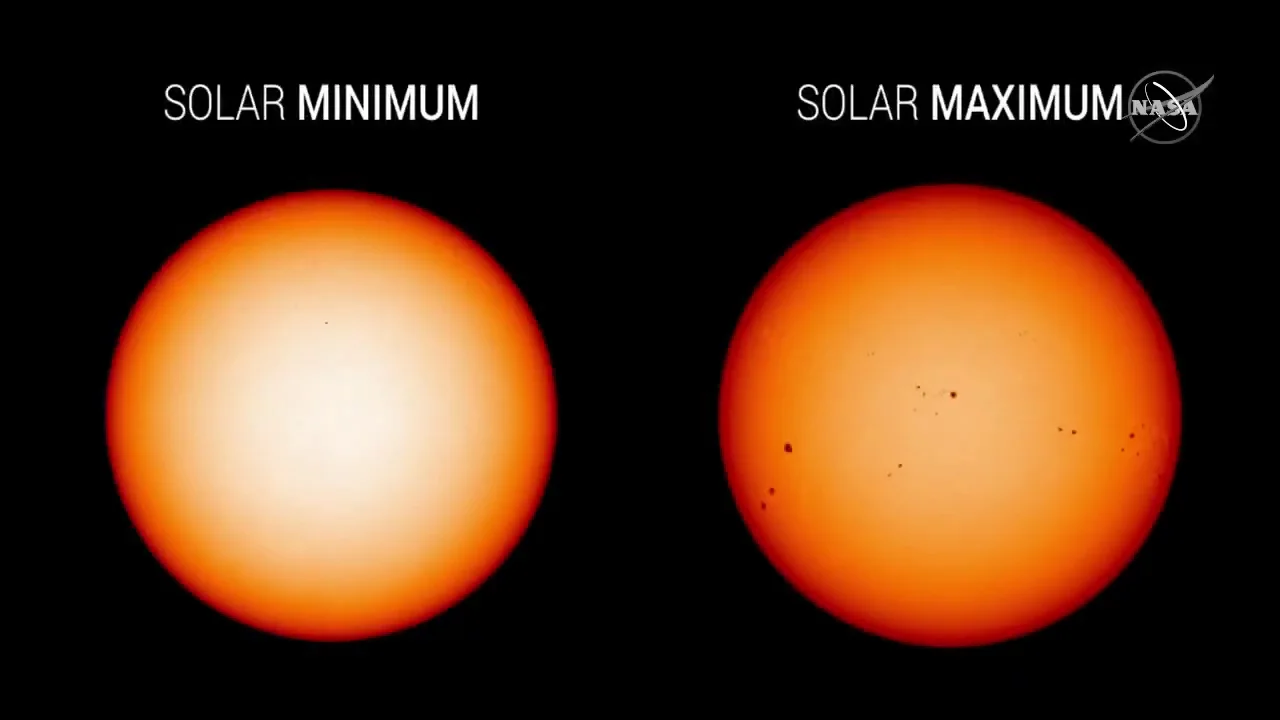
These visible light images of the Sun's photosphere, taken by NASA's Solar Dynamics Observatory, show one small, high-latitude sunspot on the Sun at solar minimum (left, Dec. 2019) versus many large sunspots and sunspot clusters, closer to the equator, at solar maximum (right, July 2014). Credit: NASA TV
The transition from one solar cycle to the next does not happen like the flip of a switch, though. Around solar minimum, observers can actually see sunspots belonging to both the old solar cycle and the new one, appearing on the Sun at the same time. Location isn't the only way to tell them apart from one another. Observers also note the orientation of the magnetic fields surrounding the sunspot.
Every 11 years, at the peak of solar maximum, the Sun's magnetic field flips polarity. For the remainder of the solar cycle, the magnetic fields surrounding sunspots continue to follow the old, pre-flip polarity. At the next solar minimum, though, new sunspots emerge with the new solar magnetic polarity. Thus, solar scientists can use these magnetic fields to tell new cycle sunspots from old cycle sunspots. As soon as sunspots from the new cycle dominate, they know the new solar cycle has officially begun.

The number of sunspots are plotted here between 2018 and 2020. Blue bars indicate sunspots with Cycle 24 magnetic polarity. Red bars indicate sunspots with Cycle 25 magnetic polarity. With Cycle 25 sunspots becoming dominant in December 2019, it marked the start of the new solar cycle. Credit: SILSO/Royal Observatory of Belgium
SPACE WEATHER
As solar activity increases in the years ahead, this will mean increasingly turbulent space weather. Space weather refers to the effects of solar flares, solar storms (also known as 'coronal mass ejections') and the solar wind on Earth's magnetic field and ionosphere, which produce impacts on our technologies on Earth and in space.
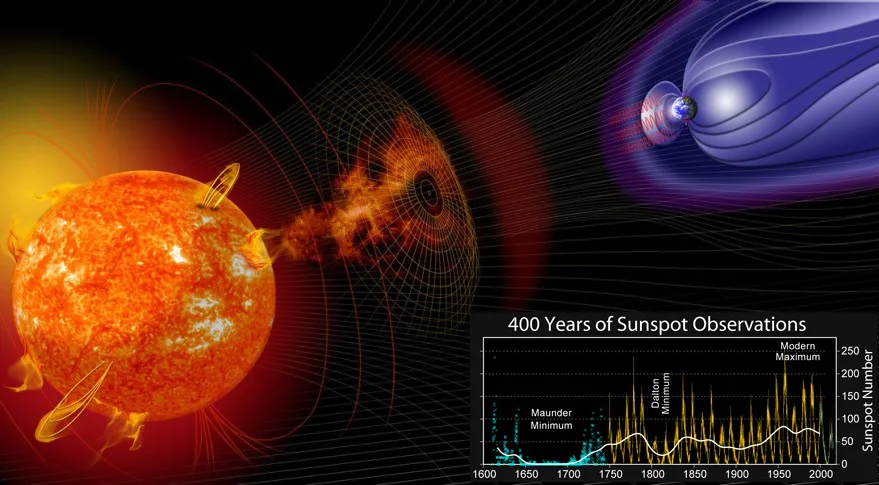
The different forms of solar activity and space weather are shown here, along with the last 400 years of solar cycles. Credit: NASA/NOAA
Solar flares can result in radio blackouts and electrical failures in orbiting spacecraft. The solar wind, and coronal mass ejections (CME), can cause fluctuations in Earth's magnetic field, resulting in geomagnetic storms. The most visible result of a geomagnetic storm is the vibrant aurora displays that appear at high latitudes. However, they can also produce current flows in the ground that have been known to disrupt electrical power grids.
One of the best-known cases of this was on March 13, 1989. An immense solar storm swept past Earth, resulting in an intense geomagnetic storm. Auroras were seen far south into the United States, and electrical currents produced in the ground knocked out power in Quebec, plunging the entire province into darkness for 12 hours.
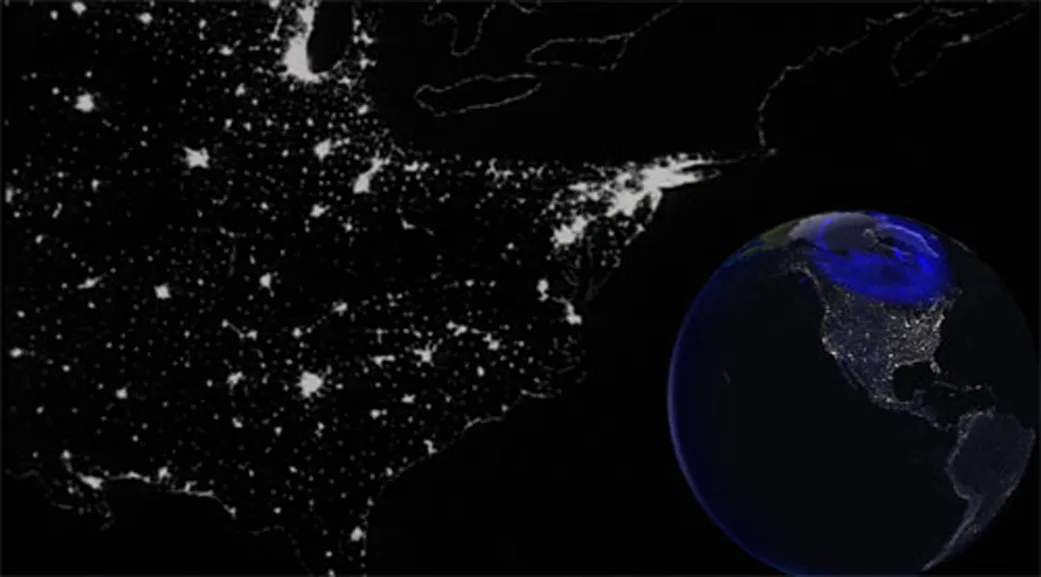
This artist's impression shows the extent of the 1989 Quebec Blackout, which was caused by an intense geomagnetic storm. Credit: NASA
Two previous events - the 1859 Carrington Event and the 1921 New York Railroad Storm - were much more intense than the 1989 event. Fortunately, they occurred before we had nation-spanning electrical grids and our current reliance on electronics and technology. A similar event occurring today could cost the world trillions in damages (and we only narrowly avoided such a fate back in the summer of 2012).
Related: Blackout-causing 'super' solar storms happen more often than we thought
When it comes to space weather, the old saying holds true - forewarned is forearmed. Thus, space weather forecasters are vigilant regarding solar activity and its potential impacts.
"There is no bad weather, just bad preparation," Jake Bleacher, chief scientist for NASA's Human Exploration and Operations Mission Directorate at NASA HQ, said in a NASA statement. "Space weather is what it is – our job is to prepare."
For orbiting spacecraft, astronauts on the International Space Station, and even robots operating on the surface of the Moon or Mars, there are methods in place to protect them from space weather. Teams running these missions can shut down spacecraft and robots, and the astronauts can end spacewalks and take shelter in specific parts of the station until the threat has passed.
Here on the ground, some power grids are still vulnerable to intense geomagnetic storm activity. New studies have identified those areas that are most vulnerable, which will allow utility companies to improve their power grids' resiliency.
According to the assessment team, which is made up of NASA and NOAA scientists, the activity of Solar Cycle 25 is expected to be below-average - roughly the same as during Solar Cycle 24. This is somewhat remarkable. For the past three solar cycles, there has been a decrease in solar activity from the cycle before. This led to some speculation that we were headed for another extreme minimum, possibly starting with Solar Cycle 25. So, this could be an indication that solar activity has levelled off, and such a minimum is now very unlikely to occur.
Also, even during a relatively quiet solar cycle, there can be extreme events. In the summer of 2012, a series of moderate solar flares went off over the course of a few days. Each one was of little concern on its own. However, the coronal mass ejections that erupted into space along with each flare ended up merging into one dense, energetic and fast-moving cloud of charged solar particles.
Watch below: Carrington-class CME Narrowly Misses Earth
If that solar storm had impacted Earth, it would have caused worldwide disruptions in our power grids, on the same scale as the Carrington Event or the New York Railroad Storm.
We were saved simply by the timing of the events. If they had occurred just two weeks before, the sunspot groups that produced them would have been pointed directly at Earth.
Sources: NASA | NOAA | USGS | Science@NASA | Scientific American







